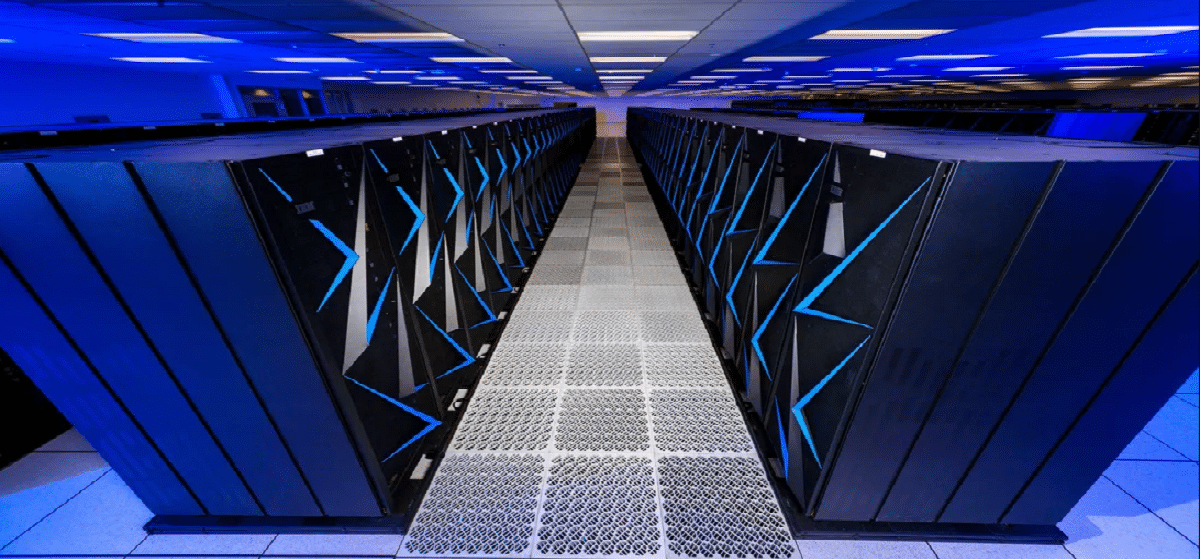
TOP500 classifies and details the 500 most powerful non-distributed computing systems in the world.
After 6 months of the publication of the previous number and complying with the publication calendar, the new 60th edition of the ranking of the 500 highest performing computers in the world.
In the new edition, there is only one change in the top ten: the Leonardo group, located in the Italian research center CINECA, ranked fourth. The cluster includes nearly 1,5 million processor cores (Xeon Platinum 8358 32C 2,6 GHz CPU) and provides performance of 255,75 petaflops.
The top ten places include:
- Frontier, located at the US Department of Energy's Oak Ridge National Laboratory. The cluster has nearly 9 million processor cores (64GHz AMD EPYC 2C CPU, AMD Instinct MI250X accelerator) and provides 1.102 exaflops of performance, which is almost three times more than the second place cluster.
- Fugaku, housed at the RIKEN Institute for Physical and Chemical Research (Japan). The cluster is built with ARM processors (158976 nodes based on Fujitsu A64FX SoC, equipped with a 8.2-core 48GHz Armv2,2-A SVE CPU) delivering 442 petaflops of performance.
- LUMI is hosted at the European Supercomputing Center (EuroHPC) in Finland and offers 151 petaflops of performance. The cluster is based on the same HPE Cray EX235a platform as the leader in the ranking, but includes 1,1 million processor cores (AMD EPYC 64C 2GHz, AMD Instinct MI250X accelerator, Slingshot-11 network).
- Leonardo hosted at the different EuroHPC in CINECA, Italy. It is an Atos BullSequana XH2000 system with Xeon Platinum 8358 32C 2.6GHz as main processors, NVIDIA A100 SXM4 40 GB as accelerators and Quad-rail NVIDIA HDR100 Infiniband as interconnect. It achieved a Linpack performance of 174,7 Pflop/s.
- Summit, built by IBM and housed at Oak Ridge National Laboratory (ORNL) in Tennessee, USA, is now ranked #5 with a performance of 148,8 Pflop/s on the HPL benchmark, which It is used to rank the TOP500 list.
- Sierra, hosted at the Lawrence Livermore National Laboratory, CA, USA, its architecture is very similar to the Summit system #5. It is built with 4320 nodes with two POWER9 CPUs and four NVIDIA Tesla V100 GPUs. Sierra made 94,6 Pflop/s.
- Sunway TaihuLight, a system developed by China's National Parallel Computer Engineering and Technology Research Center (NRCPC) and installed at the National Supercomputing Center in Wuxi, China's Jiangsu province, ranks No. 7 with 93 Pflop/s.
- Perlmutter at #8 is based on the HPE Cray “Shasta” platform and a heterogeneous system with AMD EPYC-based nodes and 1536 NVIDIA A100 accelerated nodes. Perlmutter hit 64,6 Pflop/s
- Selene now at No. 9 is an NVIDIA DGX A100 SuperPOD installed in-house at NVIDIA in the US. The system is based on an AMD EPYC processor with NVIDIA A100 for acceleration and a Mellanox HDR InfiniBand as network and achieved 63,4 Pflop/s.
- Tianhe-2A (Milky Way-2A), a system developed by China National University of Defense Technology (NUDT) and implemented at the National Supercomputer Center in Guangzhou, China, is now listed as system No. 10 with 61,4, XNUMX Pflop/s.
As for home supercomputers, clusters Chervonenkis, Galushkin and Lyapunov created by Yandex fell from places 22, 40 and 43 to places 25, 44 and 47. These clusters are designed to solve machine learning problems and offer performance of 21,5, 16, and 12,8 petaflops, respectively.
The Christofari Neo cluster deployed by Sberbank fell from 46th to 50th place. Christofari Neo runs NVIDIA DGX OS 5 (Ubuntu Edition) and offers 11,9 petaflops of performance. The cluster has over 98k cores based on AMD EPYC 7742 64C 2.25GHz CPU and comes with NVIDIA A100 80GB GPU. The second group of Sberbank (Christofari) has gone from 80th to 87th place in the ranking in six months.
For the part of the most interesting trends by Linux distributions (in brackets – 6 months ago):
47.8% (47.8%) do not detail distribution.
17,2% (18,2%) use CentOS
9,6% (8,8%) - RHEL
9% (8%) – CrayLinux
5,4% (5,2%) - Ubuntu
3,8% (3,8%) - SUSE
0,8% (0,8%) – Soul Linux
0,8% (0,8%) – RockyLinux
0,2% (0,2%) – Scientific Linux.
The minimum performance threshold to enter the Top500 for 6 months was 1,73 petaflops (six months ago, 1,65 petaflops). Four years ago only 272 clusters showed performance over petaflops, five years ago 138, six years ago 94). For the Top 100, the entry threshold increased from 5,39 to 9,22 petaflops.
The total performance of all systems in the ranking increased from 4,4 to 4,8 exaflops in 6 months (three years ago it was 1.650 exaflops and five years ago it was 749 petaflops). The system that closes the current rating was ranked 458 in the last issue.
Finally if you are interested in knowing more about it, you can check the details In the following link.